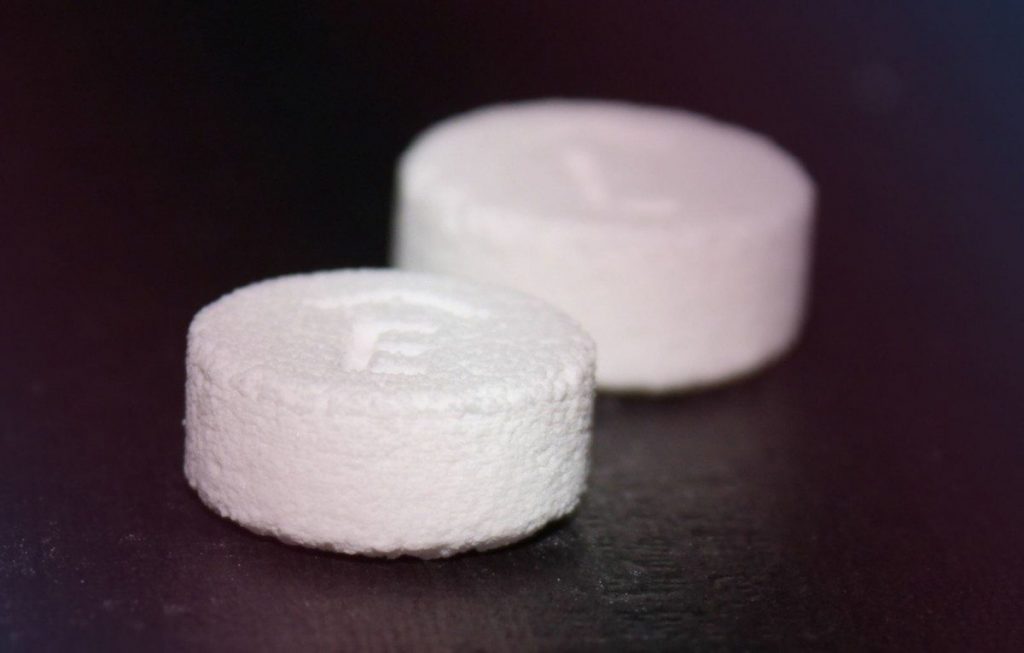The increasing availability of 3D printed medical devices, like hip implants or cranial plates, and the potential benefits of 3D printed drugs, makes additive manufacturing in healthcare hard to ignore. Committed to assuring the safety of such products, the FDA has been keeping a watchful eye on the technology’s progress, both internally and through the current market.
On December 4 2017, FDA Commissioner Dr. Scott Gottlieb released a statement reaffirming the agency’s commitment to a “new era of 3D printing of medical products.” In addition to outlining the FDA’s views on 3D printing, the statement announces the agency’s latest guidance for manufacturers submitting 3D printed devices for approval.
A comprehensive review of the market
The statement confirms that, to date, the FDA has reviewed over 100 3D printed medical devices currently on the market: from spinal implants and custom facial reconstructions, to 3D printed pills – the first of which was passed in 2015. As Gottlieb notes, “This is likely just the tip of the iceberg given the exponential growth of innovative research in this field.”
In the future the agency expects to see more medical products containing biological matter, including the direct 3D printing of new skin cells to treat burns wounds. 3D printed, fully functional organs are also a possibility, though experiments are still far from this reality.
A collection of beating, 3D bioprinted heart cells used in WFIRM’s “Body on a Chip” research. Clip via Supplementary Materials, Scientific Reports.
In-house research and investigation
On site, the FDA has two facilities with dedicated 3D printing research projects. According to Gottlieb, The Center for Drug Evaluation and Research (CDER) “enables FDA scientists to conduct research to determine how the 3D printing of drugs impacts inactive ingredients and other drug components as well as the quality control process of manufacturing.”
In a second facility, the Center for Devices and Radiological Health (CDRH), researchers have been using 3D printers “to investigate the effect of design changes on the safety and performance of devices, and to determine how iterative changes alter the device’s fit and functionality.”
Insights gained from these centers has enabled the FDA to develop a policy framework for medical manufacturers, including the CDER’s Emerging Technology Program for pharmaceutical design.

More 3D printed devices for 2018
The new guidance from the FDA clarifies the agency’s recommendations to companies making 3D printed medical devices. Though a non-binding outline, the document serves as a valuable template that could help certify even more 3D printed medical devices in 2018.
Closing the statement, Gottlieb makes a projection on the future of healthcare. While many things remain uncertain, i.e. how 3D printed devices will penetrate the market, the viability of 3D printed cells, he says, “3D printing is certain to alter the daily practice of medicine where patients will be treated with medical products manufactured specifically for them,”
“The FDA has an important mission to help advance these efforts while also protecting patients who depend on medical products to be safe and effective.”
Never miss out an another story – subscribe to the 3D Printing Industry newsletter, follow us on Twitter, and like us on Facebook.
Nominations for the second annual 3D Printing Industry Awards are now open. Make your selections for best medical application and more here.
Featured image shows UAlberta’s Stella Mathews holding up a 3D printed maple leaf sample. Photo by Michael Brown



